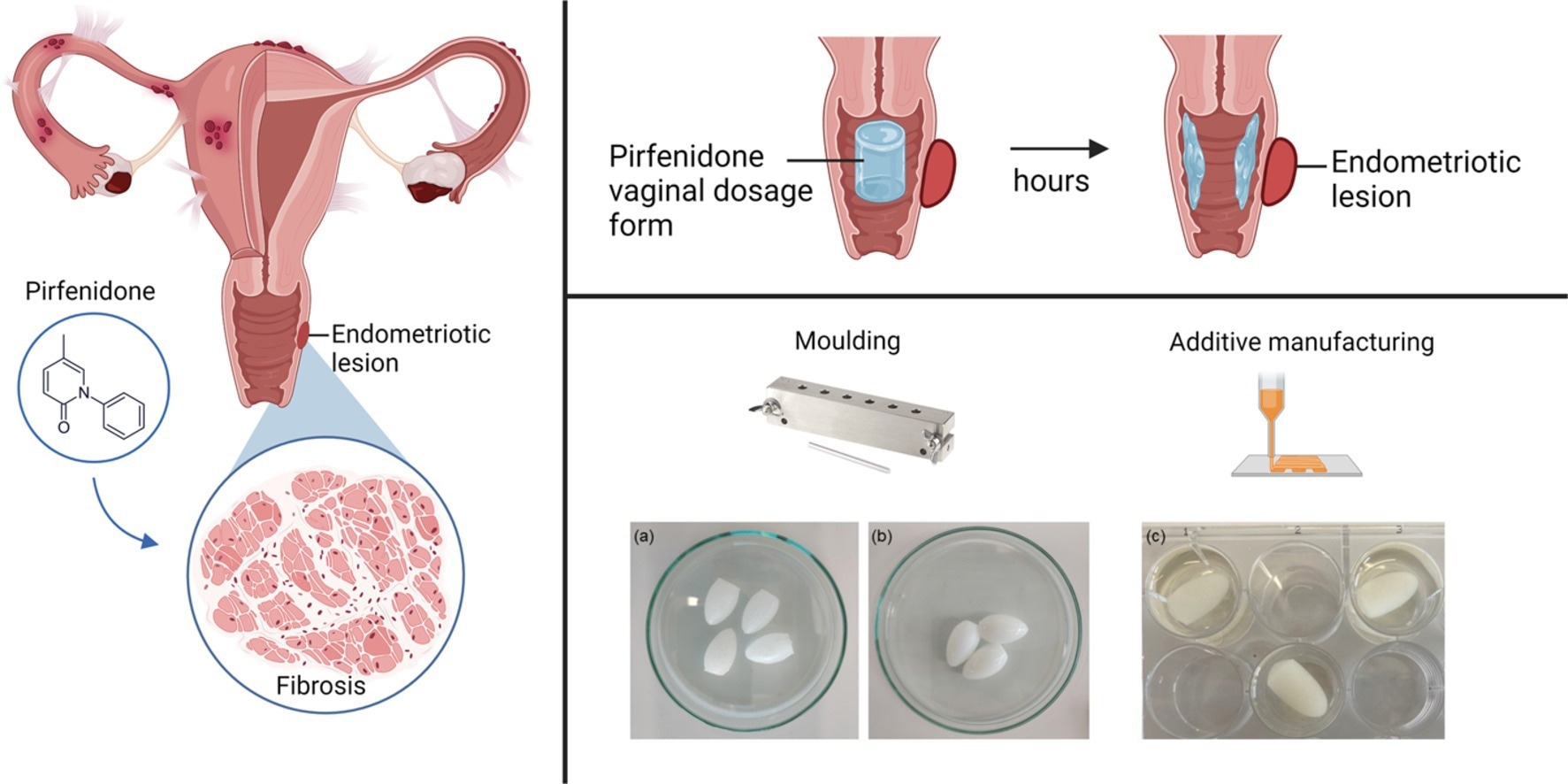In a recent study published in the European Journal of Pharmaceutical Sciences, researchers develop three-dimensional (3D)-printed vaginal ovules for endometriosis treatment.

Study: Mucoadhesive 3D printed vaginal ovules to treat endometriosis and fibrotic uterine diseases.
New approaches for treating endometriosis
Endometriosis and leiomyoma affect 10% and 70% of females of reproductive age, respectively. Fibrosis has been proposed as a therapeutic target for both diseases.
Pirfenidone is a small molecule that was approved in 2011 to treat idiopathic pulmonary fibrosis. Moreover, pirfenidone modulates transforming growth factor (TGF)-β, which is an inflammatory cytokine involved in fibrosis.
In preclinical leiomyoma models, pirfenidone has been shown to be effective in reducing fibrosis. Furthermore, in a clinical trial, orally administering pirfenidone for six months reduced fibrotic adhesions in individuals who underwent surgery for endometriosis. Despite these observations, pirfenidone was not recommended for treating endometriosis due to the risk of side effects that outweigh its potential benefits.
Vaginal drug delivery offers numerous advantages over oral administration. Local high concentrations of an active pharmaceutical ingredient (API) around reproductive organs through vaginal delivery can improve the effectiveness and allow for the use of lower doses.
Semi-solid extrusion (SSE) and fused deposition modeling (FDM) are two types of additive manufacturing, which is otherwise known as 3D printing. SSE has been less explored for gynecologic drug delivery applications; however, FDM has been used to develop intrauterine devices, vaginal rings, uro-gynecologic mesh implants, and vaginal suppository molds. Unlike FDM, SSE can be used to create gel-like and temperature-sensitive formulations.
About the study
In the present study, researchers developed semi-solid pirfenidone-containing vaginal ovules and evaluated their characteristics. Standard vaginal ovules were manufactured for comparison using a hydrophilic excipient (Macrogol) and hard fat (Witepsol). Sodium alginate and hydroxypropyl methylcellulose (HPMC) were selected for 3D printing, given their mucoadhesive properties.
The SSE method was used to generate 3D-printed ovules. HPMC and sodium alginate were mixed with an aqueous solution containing a buffer and calcium chloride and subsequently transferred into a syringe.
Pirfenidone was added using a dual-syringe method. The mixed formulation was transferred into an SSE cartridge and printed.
The uniformity of mass and content, as well as the disintegration behavior of ovules, was evaluated. Shake flask tests were performed to examine the release of pirfenidone from the ovules. Additionally, a bespoke release test was performed to model in vitro API transport from vaginal mucosa into systemic circulation.
Ex vivo experiments were also performed to characterize the properties of the printed ovules using a porcine vagina within six hours after slaughter. The effects of pirfenidone on the metabolic activity of an epithelial cell line (12Z) derived from endometriotic lesions were also determined.
Slow-release of pirfenidone from 3D-printed ovules
All ovules were rigid, exhibited a homogenous visual appearance, and passed the mass and content uniformity tests. Witepsol and Macrogol ovules showed rapid dissolution, whereas the printed ovules softened after one hour. In shake flask tests, rapid liberation of pirfenidone from Witepsol and Macrogol ovules was observed, with up to 100% released after three hours.
By contrast, pirfenidone release from 3D-printed ovules was much slower, with up to 90% released after eight hours. In the bespoke release test, the release behavior of pirfenidone from Witepsol and Macrogol ovules was similar to that of free pirfenidone.
Comparatively, pirfenidone release was much slower from the printed ovules, with up to 75% released after eight hours. Witepsol and Macrogol ovules dissolved entirely in the porcine vagina within three hours.
The 3D-printed ovules exhibited partial disintegration within three hours, complete disintegration after 16 hours, and ultimately formed a mucoadhesive hydrogel.
Pirfenidone levels up to 1.25 mg/ml had no effect on the metabolic activity of 12Z cells exposed for two or six hours. However, high pirfenidone levels after 24-hour exposure reduced the metabolic activity of the cells, thus suggesting that sustained concentrations could effectively reduce their activity.
Conclusions
The researchers propose that vaginal delivery of pirfenidone could be used to treat endometriosis. To this end, they developed pirfenidone-containing vaginal dosage formulations in which standard vaginal ovules and 3D-printed ovules met pharmacopeial quality tests. Furthermore, 3D-printed ovules were not fully dissolved but softened, thereby meeting the test requirements.
These findings indicate that 3D-printed ovules with in vitro release and ex vivo mucoadhesive benefits could allow for the sustained release of pirfenidone, thereby improving the efficacy of this treatment as compared to standard ovules. Despite the slow manufacturing speed, 3D-printed ovules hold considerable promise as vaginal drug delivery systems.
Journal reference:
- Teworte, S., Aleandri, S., Weber, J., et al. (2023). Mucoadhesive 3D printed vaginal ovules to treat endometriosis and fibrotic uterine diseases. European Journal of Pharmaceutical Sciences. doi:10.1016/j.ejps.2023.106501